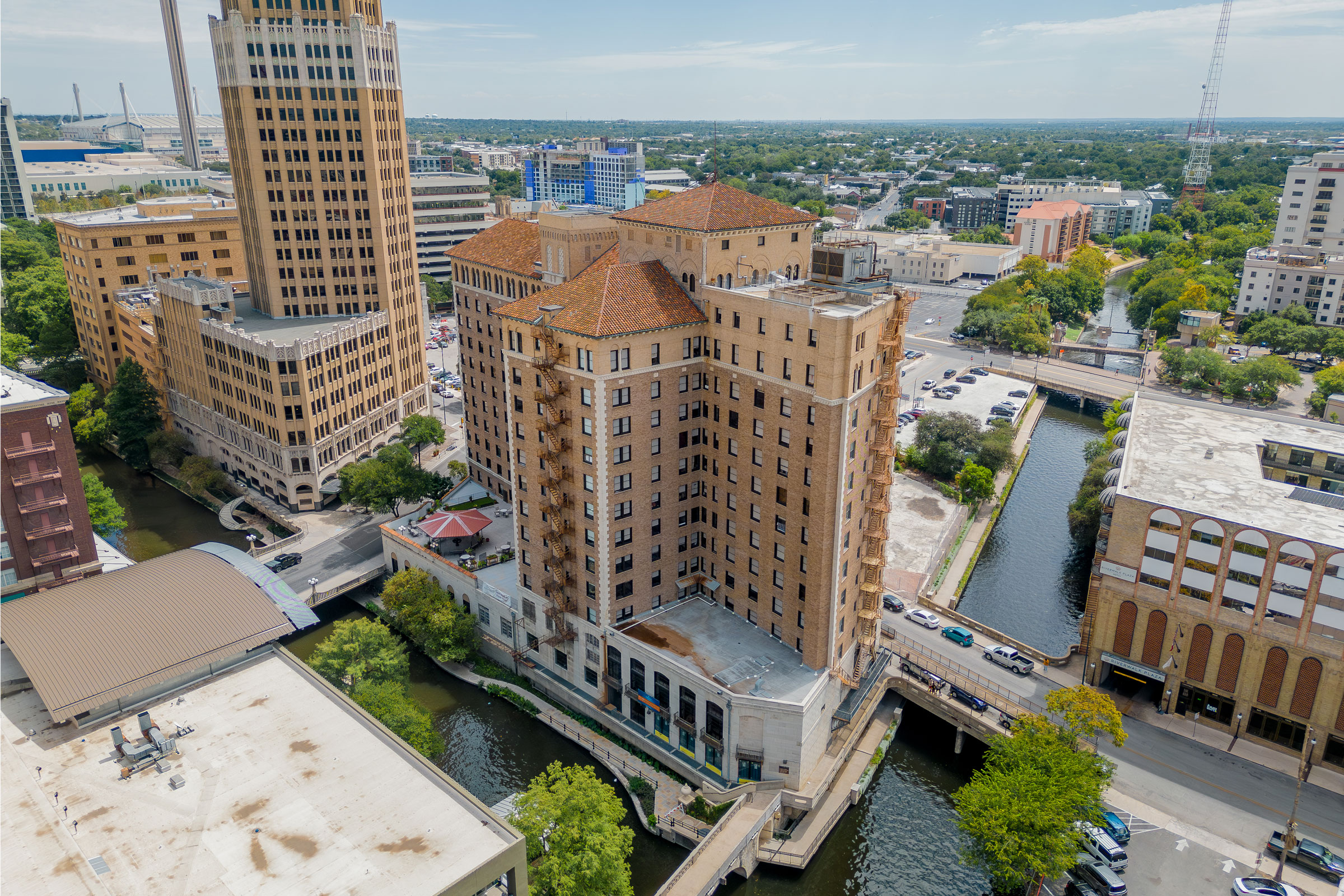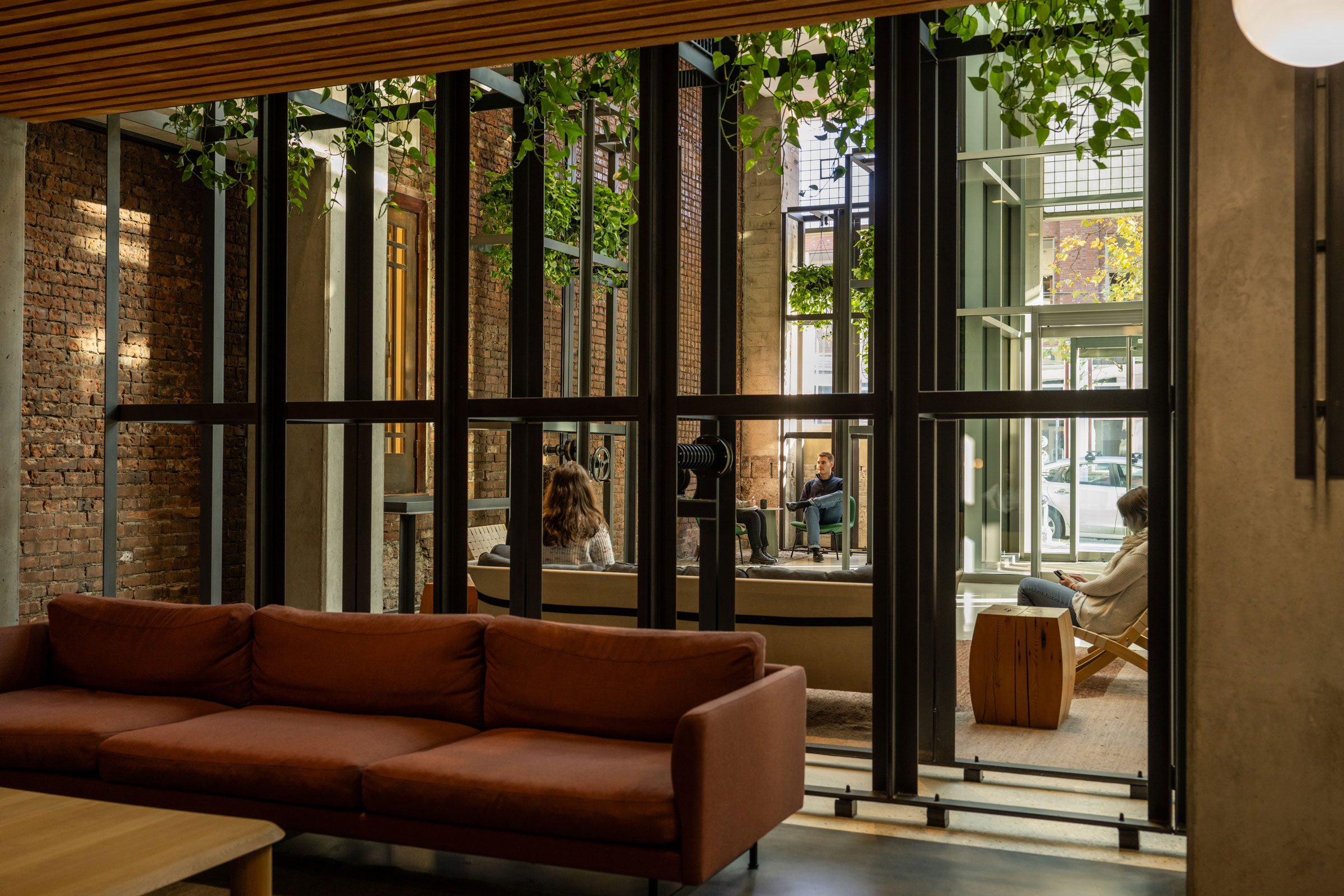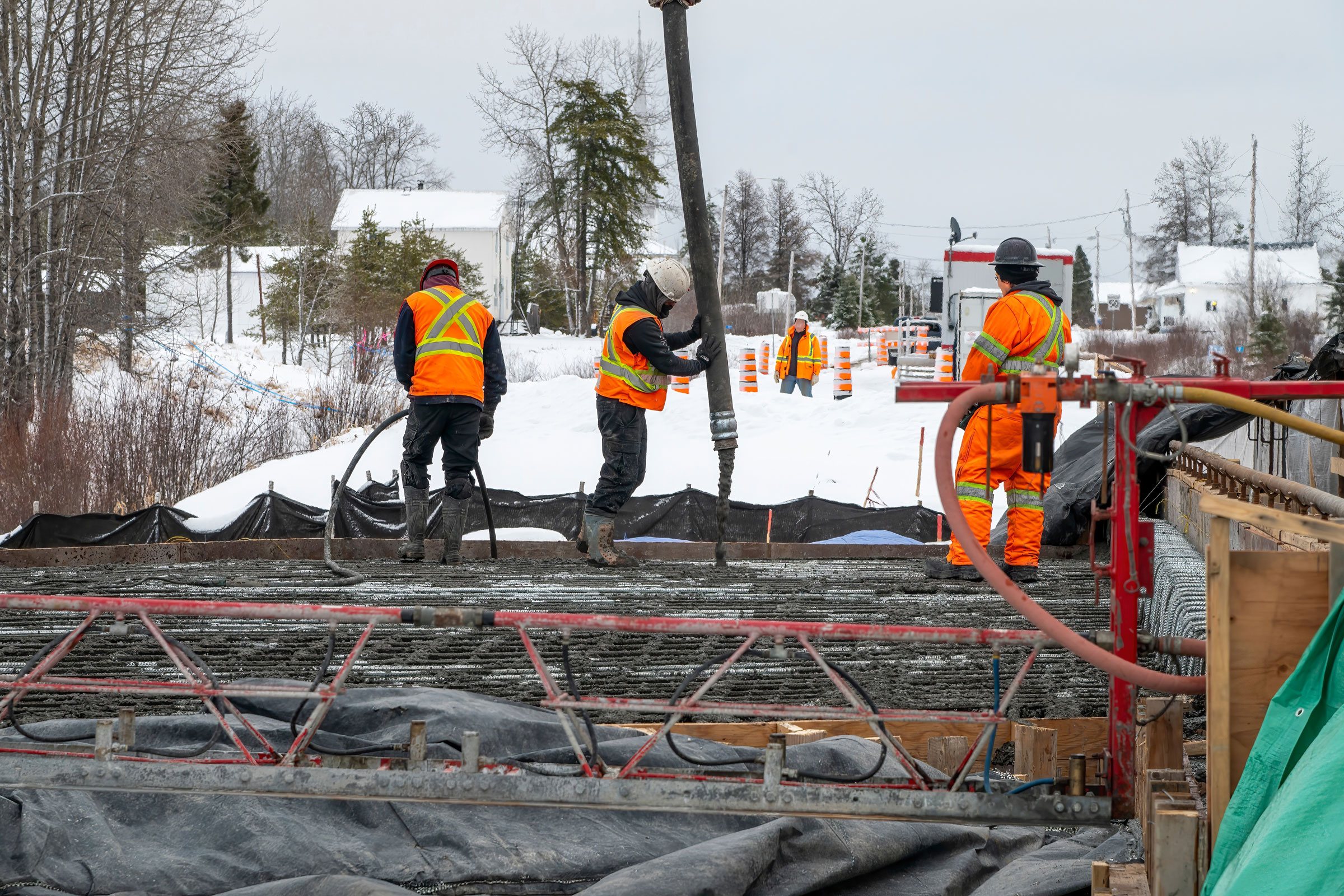Story at a glance:
- CREO shares how adaptive reuse projects in San Antonio breathe new life into urban cores, revitalizing downtowns.
- Studies show that cities thrive when more people live downtown, from the benefits to community to economic benefits.
- The historic Travis Building in San Antonio transformed a historic office property into luxury apartments.
Downtowns are the cultural and economic hearts of our cities. When downtowns thrive, they foster connection, spark innovation, and fuel growth. Across the country we still see cities grappling with the shift in demand for traditional office space, the need for housing, and changes in demographics and lifestyle preferences all impacting the vitality of urban cores. Adaptive reuse allows us to breathe new life into underused and historic structures, transforming them in ways that meet today’s needs while upholding the architectural integrity of our cities. It offers a more thoughtful and sustainable approach that helps downtowns remain dynamic, relevant, and active.
The benefits are clear and widely preached. We preserve architectural heritage, reduce environmental impact compared to ground-up construction, and contribute to more vibrant, walkable downtowns that strengthen the social and economic fabric of our cities. That’s why cities like San Antonio, for example—rich in history and architectural character, yet seeking to draw more people to live, work, and spend time there—present a compelling opportunity for adaptive reuse to make a real impact.
While adaptive reuse can be more expensive, the positives outweigh this initial investment, particularly when it involves residential development. Cities thrive when more people live downtown. A steady residential presence brings life to streets beyond traditional working hours, making neighborhoods feel safer and more inviting. It also creates foot traffic that attracts restaurants, retail, and other commercial tenants, whereas without residents, many downtowns tend to empty after the workday ends. Recognizing these benefits, developers and city leaders should continue to turn to adaptive reuse to bring new life to downtown structures.
Reviving Downtown Streets with Residential Conversion
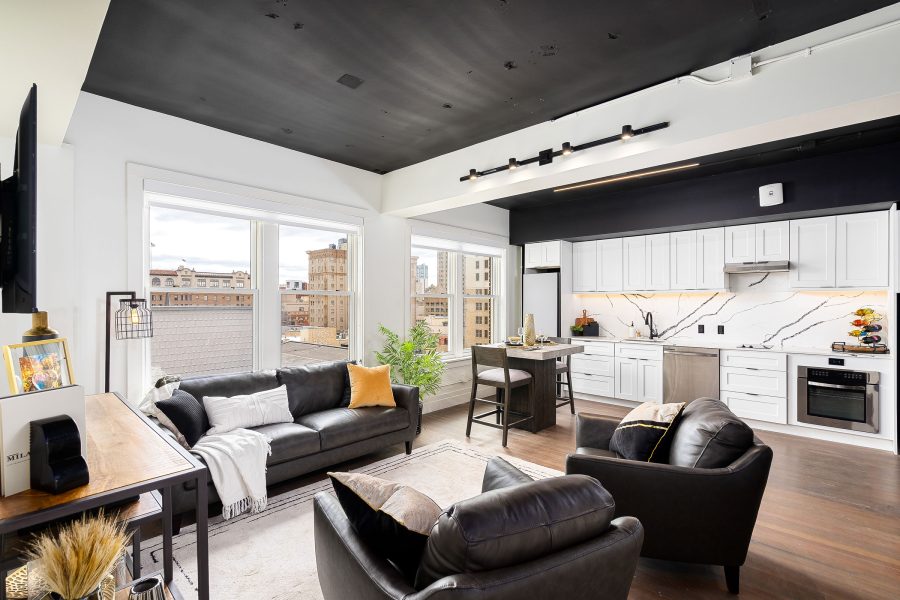
CREO transformed a historic office building into the current Travis Building, with more than 60 luxury apartments in the heart of San Antonio. Photo courtesy of CREO
One project that speaks to this vision is the transformation of the historic Travis Building, which is situated along the famous San Antonio Riverwalk—an ideal location in the heart of the Central Business District. Similar to many downtowns around the country at the time, demand for office space had been declining in San Antonio. This, combined with a lack of convenient housing options downtown, influenced the decision to convert the office building for a new use. Originally built in the 1920s, the historic nature of the building—a popular quality particularly with younger generations—distinguished it from other offerings, making it a great contender for office-to-residential conversion.
We at CREO architecture firm led the conversion of the property into more than 60 luxury apartments and 20,000 square feet of ground floor commercial space. The goal was to stay true to the original character of the building as much as possible. We preserved original tile floors in the corridors and restored wood flooring in the units—details that represent authenticity and appeal to today’s potential tenants. Working within the building’s constraints, we made additional strategic decisions, like removing dropped ceilings to enhance natural light and create a greater sense of openness. These choices made the space feel fresh and livable without disrupting the true integrity of the building.
Cities thrive when more people live downtown.
Today the Travis Building is a hub for locals looking to live, work, and play within walking distance of San Antonio’s most popular attractions. As a sign of its success, the building’s residential units are fully leased, and the last commercial space is being renovated for a new restaurant concept. This leasing momentum has helped energize the surrounding neighborhood and made downtown San Antonio feel more active, welcoming, and economically resilient. Its successful conversion from office to residential sets a strong precedent for other buildings in San Antonio and cities around the country that are experiencing similar challenges in office leasing activity, housing shortages, and foot traffic in downtown districts.
Attracting Older Residents to Revitalize City Centers
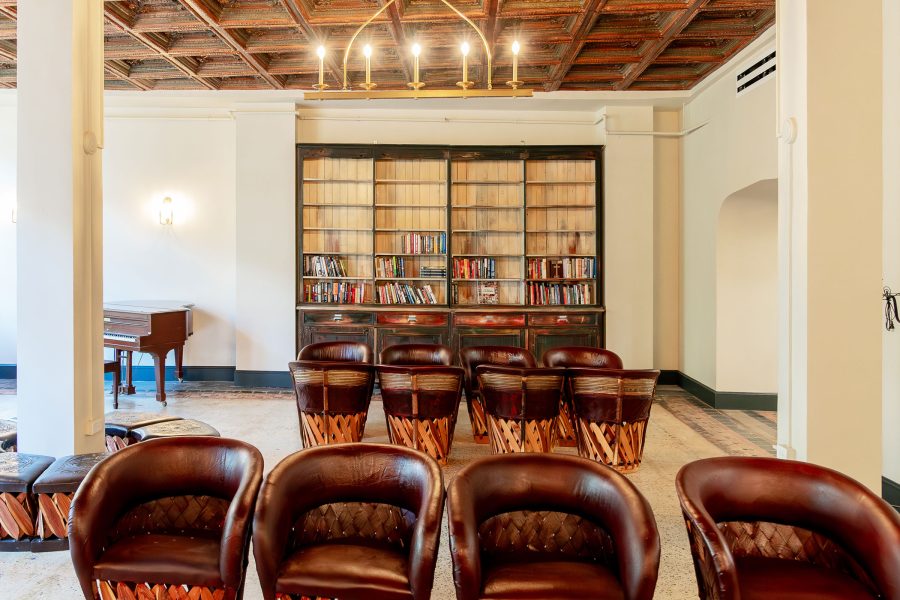
The Granada Homes project is a renovation of an existing affordable housing complex in downtown San Antonio, serving mixed-age seniors. The renovation focuses on key historic areas, including the main lobby and library. Photo courtesy of CREO
Granada Homes is another strong example of adaptive reuse bringing new life and purpose to downtown. By transforming a historic building in a central urban location, the development created thoughtfully designed, affordable senior housing in a neighborhood typically out of reach for low-income residents. It also demonstrates a level of design not often applied to these housing types.
Built in 1926, the building originally operated as The Plaza Hotel before being converted into affordable senior apartments in 1966. As one of the most beautiful, historic buildings in San Antonio, our goal with its most recent renovation was to honor the building’s storied past while updating it for modern, accessible living. We restored the iconic lobby, library, and other historic spaces to their original 1920s grandeur, while adding 16 new residential units to the existing 249. New amenities, including a library, business center, chapel, community center, state-of-the-art laundry facility, and outdoor terrace, help create a lively, supportive environment that meets daily needs and encourages social connection and well-being. Bringing back some of the original architectural character from The Plaza Hotel creates a unique living situation, where residents can enjoy updated units while still sensing the building’s history through a gentle nod to the past in public spaces.
The scope for the exterior renovation was primarily focused on upgrading the main entry, exposing previously covered existing window openings to allow for more natural light and restoring historic elements that had fallen into disrepair. We worked closely with the San Antonio Office of Historic Preservation and the Texas Historical Association to make certain all modifications preserved the structure’s historical integrity, ensuring it remains a meaningful part of the city’s streetscape and helps keep the cultural essence of downtown intact.
Also situated along the San Antonio Riverwalk, Granada Homes demonstrates how adaptive reuse can successfully integrate affordable senior housing into the vibrant downtown fabric. Unlike typical senior living developments on the outskirts, locating senior housing in the city center invites residents to engage regularly with local shops, restaurants, and cultural attractions, helping to sustain an active urban environment. Additionally, by bringing seniors into the downtown core, Granada Homes challenges common perceptions about aging and fosters greater inclusivity, helping to combat the isolation many older adults face.
Unlocking the Potential of Adaptive Reuse
Adaptive reuse holds tremendous potential to revitalize struggling downtowns, especially by giving underutilized real estate assets new purpose and addressing pressing needs like housing.
While there are many benefits—economic growth, preservation of architectural integrity, and reduced environmental impact—adaptive reuse has the power to make downtown neighborhoods more inviting and dynamic.
By transforming underutilized and historic buildings into places where people want to live, work, and gather, we create destinations that draw visitors, encourage them to stay longer, and ultimately inspire more people to call these neighborhoods home.

